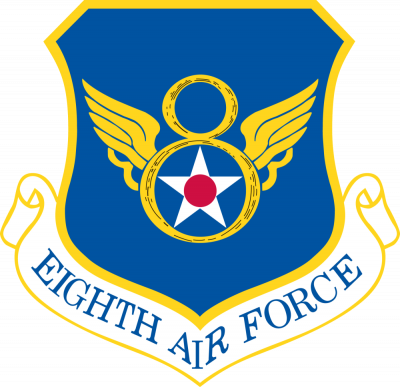The SchweinfurtRegensburg mission was a strategic bombing mission during World War II carried out by Boeing B-17 Flying Fortress heavy bombers of the U.S. Army Air Forces on August 17, 1943. The mission was an ambitious plan to cripple the German aircraft industry; it was also known as the "double-strike mission" because it entailed two large forces of bombers attacking separate targets in order to disperse fighter reaction by the Luftwaffe. It was also the first American "shuttle" mission, in which all or part of a mission landed at a different field and later bombed another target before returning to its base.
After being postponed several times by unfavorable weather, the operation, known within the Eighth Air Force as "Mission No. 84", was flown on the anniversary of the first daylight raid by the Eighth Air Force.Mission No. 84 was a strike by 376 bombers of 16 bomb groups against German heavy industry well beyond the range of escorting fighters. The mission inflicted heavy damage on the Regensburg target, but at catastrophic loss to the force, with 60 bombers lost and many more damaged beyond economical repair. As a result, the Eighth Air Force was unable to follow up immediately with a second attack that might have seriously crippled German industry. When Schweinfurt was finally attacked again two months later, the lack of long-range fighter escort had still not been addressed and losses were even higher. As a consequence, deep penetration strategic bombing was curtailed for five months.
As soon as the reconnaissance photographs were received on the evening of the 17th, Generals Eaker and Anderson knew that the Schweinfurt raid had been a failure. The excellent results at Regensburg were small consolation for the loss of 60 B-17s. The results of the bombing were exaggerated, and the high losses were well disguised in after-mission reports. Everyone who flew the mission stressed the importance of the escorts in reducing losses; the planners grasped only that Schweinfurt would have to be bombed again, soon, in another deep-penetration, unescorted mission.
The Eighth Air Force (Air Forces Strategic) is a numbered air force (NAF) of the United States Air Force's Air Force Global Strike Command (AFGSC). It is headquartered at Barksdale Air Force Base, Louisiana. The command serves as Air Forces Strategic – Global Strike, one of the air components of United States Strategic Command (USSTRATCOM). The Eighth Air Force includes the heart of America's heavy bomber force: the Northrop Grumman B-2 Spirit stealth bomber, the Rockwell B-1 Lancer supersonic bomber, and the Boeing B-52 Stratofortress heavy bomber aircraft.
Established on 22 February 1944 by the redesignation of VIII Bomber Command at RAF Daws Hill in High Wycombe, England, the Eighth Army Air Force (8 AAF) was a United States Army Air Forces combat air force in the European Theater of World War II (1939/41–1945), engaging in operations primarily in the Northern Europe area of responsibility; carrying out strategic bombing of enemy targets in France, the Low Countries, and Germany; and engaging in air-to-air fighter combat against enemy aircraft until the German capitulation in May 1945. It was the largest of the deployed combat Army Air Forces in numbers of personnel, aircraft, and equipment.
During the Cold War (1945–1991), 8 AF was one of three Numbered Air Forces of the United States Air Force's Strategic Air Command (SAC), with a three-star general headquartered at Westover Air Force Base, Massachusetts commanding USAF strategic bombers and missiles on a global scale. Elements of 8 AF engaged in combat operations during the Korean War (1950–1953); Vietnam War (1961–1975), as well as Operation Desert Storm (1990–1991) over Iraq and occupied Kuwait in the First Persian Gulf War.

1943Aug, 17
World War II: The U.S. Eighth Air Force suffers the loss of 60 bombers on the Schweinfurt-Regensburg mission.
Choose Another Date
Events on 1943
- 11Feb
Dwight D. Eisenhower
World War II: General Dwight D. Eisenhower is selected to command the allied armies in Europe. - 30May
Auschwitz concentration camp
The Holocaust: Josef Mengele becomes chief medical officer of the Zigeunerfamilienlager (Romani family camp) at Auschwitz concentration camp. - 19Jun
Pittsburgh Steelers
The Philadelphia Eagles and Pittsburgh Steelers in the NFL merge for one season due to player shortages caused by World War II. - 6Nov
Kiev
World War II: The Soviet Red Army recaptures Kiev. Before withdrawing, the Germans destroy most of the city's ancient buildings. - 4Dec
Josip Broz Tito
World War II: In Yugoslavia, resistance leader Marshal Josip Broz Tito proclaims a provisional democratic Yugoslav government in-exile.

 English
English  español
español  français
français  português
português  русский
русский  العربية
العربية  简体中文
简体中文 